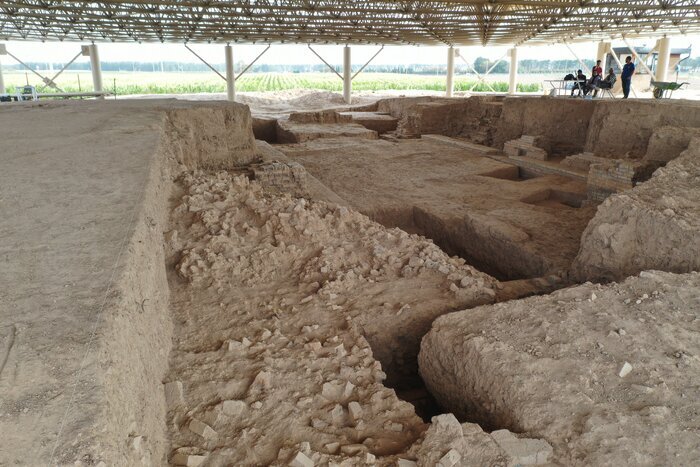Foundations of two giant structures unearthed near Persepolis

TEHRAN – A team of Iranian archaeologists has discovered two enormous foundations, believed to be made to support ancient structures, near Persepolis, which was once the ceremonial capital of the Achaemenids.
The discoveries were made near Tall-e Ajori, which yielded glazed bricks of bulls and mushhushshu-dragons in 2021.
Persepolis was the seat of the government of the Achaemenid Empire, though it was designed primarily to be a showplace and spectacular center for the receptions and festivals of the kings and their empire. It was burnt by Alexander the Great in 330 BC apparently as revenge against the Persians because it seems the Persian King Xerxes had burnt the Greek City of Athens around 150 years earlier.
The city’s immense terrace was begun about 518 BC by Darius the Great, the Achaemenid Empire’s king. On this terrace, successive kings erected a series of architecturally stunning palatial buildings, among them the massive Apadana palace and the Throne Hall (“Hundred-Column Hall”).
The site is marked by a large terrace with its east side abutting the Kuh-e Rahmat (“Mount of Mercy”). The other three sides are formed by a retaining wall, varying in height with the slope of the ground from 13 to 41 feet (4 to 12 meters); on the west side, a magnificent double stair in two flights of 111 short stone steps leads to the top. On the terrace are the ruins of several colossal buildings, all constructed of a dark gray stone (often polished to a marble-like surface) from the adjacent mountain.
AFM
Leave a Comment